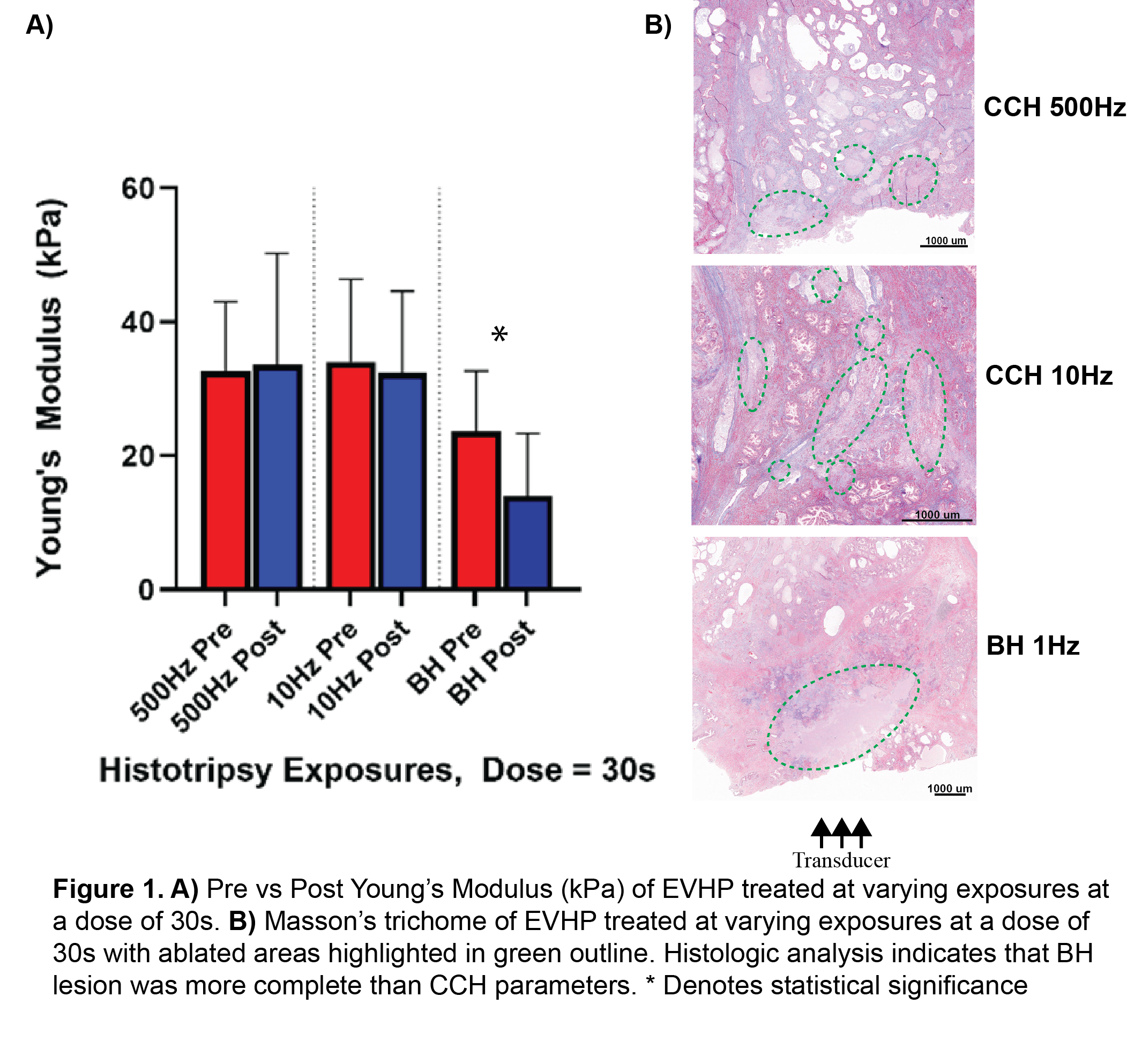Back
Poster, Podium & Video Sessions
MP04: Benign Prostatic Hyperplasia: Surgical Therapy & New Technology II
MP04-02: Analysis of Ex-vivo Human BPH Tissue Treated by Histotripsy: Dose and Parameter Effects
Friday, May 13, 2022
8:45 AM – 10:00 AM
Location: Room 228
Zorawar Singh*, Albany, NY, Yashwanth N. Kumar, Yak-Nam Wang, Adam Maxwell, Matthew Bruce, Rishi Sekar, Seattle, WA, Eli Vlaisavljevich, Blacksburg, VA, Lawrence D. True, George R. Schade, Seattle, WA

Zorawar Singh
Northwell LIJ
Poster Presenter(s)
Introduction: Histotripsy is a promising alternative to more invasive procedures for the treatment of benign prostatic hyperplasia (BPH). However, in a phase 1 clinical trial, histotripsy failed to provide objective improvements in urinary function. One explanation may be that the clinical trial pulse parameters, optimized in a canine model, do not translate to more fibrotic human prostates. We aimed to evaluate the efficacy of different histotripsy parameter settings to identify a more efficacious exposure in ex-vivo human BPH tissue (EVHP).
Methods: Deidentified EVHP tissue specimens (n=17) were treated with an 18 element 700kHz cavitation histotripsy transducer, which approximated the device used in the prior clinical trial, and a 1.5MHz boiling histotripsy (BH) transducer. Three different histotripsy exposures were compared: 1) a high pulse repetition frequency (PRF) (approximating the clinical system cavitation cloud histotripsy [CCH]), 2) low PRF CCH and 3) 1Hz PRF BH. Treatment effectiveness was evaluated by measuring pre vs. post treatment Young’s modulus through shear wave elastography (SWE) and histologic analysis (H&E, Masson’s Trichome) of the targeted area. The dose was standardized at 30s/mm and escalated as required to note a significant change in SWE.
Results: At the given dose of 30s/mm, BH treatments resulted in a significant 40.1% reduction in SWE Young’s modulus (Figure 1A) p < 0.001. At this dose, neither of the CCH parameter settings (500Hz and 10Hz) resulted in a significant reduction in the Young’s modulus with % changes of differences of 3.1% (p = .83) and -5% (p = .08), respectively. For CCH settings, greater exposure times (up to 90s) did result in significant stiffness reduction of 12.5% (p = 0.04) and 41.1% (p < 0.001) for 500Hz and 10Hz parameter settings, respectively. On histology (Figure 1B), at 30s/mm, the CCH parameter settings resulted in minimal intermittent damage while BH treatments caused near complete ablation. At increasing doses, CCH was also capable of causing complete liquefactive cavity formation.
Conclusions: BH parameters applied in this study resulted in more complete ablation of EVH tissue in comparison to CCH parameters. Additionally, histotripsy treatment parameters similar to those applied with a previous clinical system did not produce consistent ablation of EVHP possibly explaining trial results.
Source of Funding: None

Methods: Deidentified EVHP tissue specimens (n=17) were treated with an 18 element 700kHz cavitation histotripsy transducer, which approximated the device used in the prior clinical trial, and a 1.5MHz boiling histotripsy (BH) transducer. Three different histotripsy exposures were compared: 1) a high pulse repetition frequency (PRF) (approximating the clinical system cavitation cloud histotripsy [CCH]), 2) low PRF CCH and 3) 1Hz PRF BH. Treatment effectiveness was evaluated by measuring pre vs. post treatment Young’s modulus through shear wave elastography (SWE) and histologic analysis (H&E, Masson’s Trichome) of the targeted area. The dose was standardized at 30s/mm and escalated as required to note a significant change in SWE.
Results: At the given dose of 30s/mm, BH treatments resulted in a significant 40.1% reduction in SWE Young’s modulus (Figure 1A) p < 0.001. At this dose, neither of the CCH parameter settings (500Hz and 10Hz) resulted in a significant reduction in the Young’s modulus with % changes of differences of 3.1% (p = .83) and -5% (p = .08), respectively. For CCH settings, greater exposure times (up to 90s) did result in significant stiffness reduction of 12.5% (p = 0.04) and 41.1% (p < 0.001) for 500Hz and 10Hz parameter settings, respectively. On histology (Figure 1B), at 30s/mm, the CCH parameter settings resulted in minimal intermittent damage while BH treatments caused near complete ablation. At increasing doses, CCH was also capable of causing complete liquefactive cavity formation.
Conclusions: BH parameters applied in this study resulted in more complete ablation of EVH tissue in comparison to CCH parameters. Additionally, histotripsy treatment parameters similar to those applied with a previous clinical system did not produce consistent ablation of EVHP possibly explaining trial results.
Source of Funding: None


.jpg)
.jpg)